Pejman Khadivi
DGAFF: Deep Genetic Algorithm Fitness Formation for EEG Bio-Signal Channel Selection
Feb 21, 2022



Abstract:Brain-computer interface systems aim to facilitate human-computer interactions in a great deal by direct translation of brain signals for computers. Recently, using many electrodes has caused better performance in these systems. However, increasing the number of recorded electrodes leads to additional time, hardware, and computational costs besides undesired complications of the recording process. Channel selection has been utilized to decrease data dimension and eliminate irrelevant channels while reducing the noise effects. Furthermore, the technique lowers the time and computational costs in real-time applications. We present a channel selection method, which combines a sequential search method with a genetic algorithm called Deep GA Fitness Formation (DGAFF). The proposed method accelerates the convergence of the genetic algorithm and increases the system's performance. The system evaluation is based on a lightweight deep neural network that automates the whole model training process. The proposed method outperforms other channel selection methods in classifying motor imagery on the utilized dataset.
Brain Tumor Classification by Cascaded Multiscale Multitask Learning Framework Based on Feature Aggregation
Dec 28, 2021



Abstract:Brain tumor analysis in MRI images is a significant and challenging issue because misdiagnosis can lead to death. Diagnosis and evaluation of brain tumors in the early stages increase the probability of successful treatment. However, the complexity and variety of tumors, shapes, and locations make their segmentation and classification complex. In this regard, numerous researchers have proposed brain tumor segmentation and classification methods. This paper presents an approach that simultaneously segments and classifies brain tumors in MRI images using a framework that contains MRI image enhancement and tumor region detection. Eventually, a network based on a multitask learning approach is proposed. Subjective and objective results indicate that the segmentation and classification results based on evaluation metrics are better or comparable to the state-of-the-art.
Segmentation of Lungs COVID Infected Regions by Attention Mechanism and Synthetic Data
Aug 25, 2021
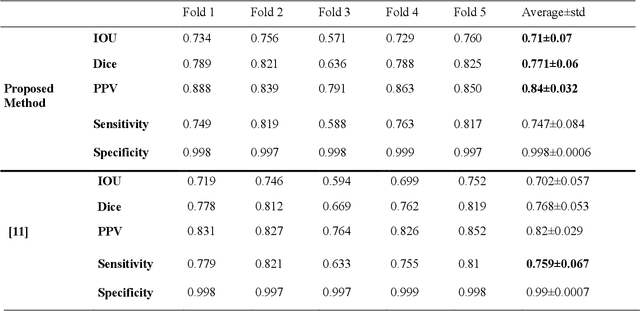


Abstract:Coronavirus has caused hundreds of thousands of deaths. Fatalities could decrease if every patient could get suitable treatment by the healthcare system. Machine learning, especially computer vision methods based on deep learning, can help healthcare professionals diagnose and treat COVID-19 infected cases more efficiently. Hence, infected patients can get better service from the healthcare system and decrease the number of deaths caused by the coronavirus. This research proposes a method for segmenting infected lung regions in a CT image. For this purpose, a convolutional neural network with an attention mechanism is used to detect infected areas with complex patterns. Attention blocks improve the segmentation accuracy by focusing on informative parts of the image. Furthermore, a generative adversarial network generates synthetic images for data augmentation and expansion of small available datasets. Experimental results show the superiority of the proposed method compared to some existing procedures.
Compound Frechet Inception Distance for Quality Assessment of GAN Created Images
Jun 16, 2021



Abstract:Generative adversarial networks or GANs are a type of generative modeling framework. GANs involve a pair of neural networks engaged in a competition in iteratively creating fake data, indistinguishable from the real data. One notable application of GANs is developing fake human faces, also known as "deep fakes," due to the deep learning algorithms at the core of the GAN framework. Measuring the quality of the generated images is inherently subjective but attempts to objectify quality using standardized metrics have been made. One example of objective metrics is the Frechet Inception Distance (FID), which measures the difference between distributions of feature vectors for two separate datasets of images. There are situations that images with low perceptual qualities are not assigned appropriate FID scores. We propose to improve the robustness of the evaluation process by integrating lower-level features to cover a wider array of visual defects. Our proposed method integrates three levels of feature abstractions to evaluate the quality of generated images. Experimental evaluations show better performance of the proposed method for distorted images.
Robust Watermarking using Diffusion of Logo into Autoencoder Feature Maps
May 24, 2021



Abstract:Digital contents have grown dramatically in recent years, leading to increased attention to copyright. Image watermarking has been considered one of the most popular methods for copyright protection. With the recent advancements in applying deep neural networks in image processing, these networks have also been used in image watermarking. Robustness and imperceptibility are two challenging features of watermarking methods that the trade-off between them should be satisfied. In this paper, we propose to use an end-to-end network for watermarking. We use a convolutional neural network (CNN) to control the embedding strength based on the image content. Dynamic embedding helps the network to have the lowest effect on the visual quality of the watermarked image. Different image processing attacks are simulated as a network layer to improve the robustness of the model. Our method is a blind watermarking approach that replicates the watermark string to create a matrix of the same size as the input image. Instead of diffusing the watermark data into the input image, we inject the data into the feature space and force the network to do this in regions that increase the robustness against various attacks. Experimental results show the superiority of the proposed method in terms of imperceptibility and robustness compared to the state-of-the-art algorithms.
Bifurcated Autoencoder for Segmentation of COVID-19 Infected Regions in CT Images
Nov 01, 2020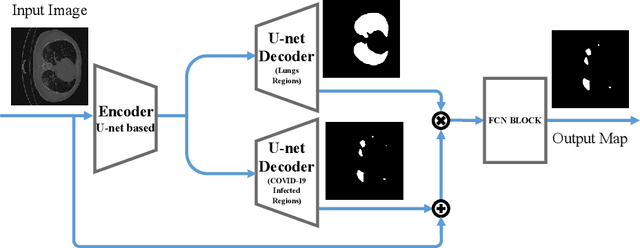
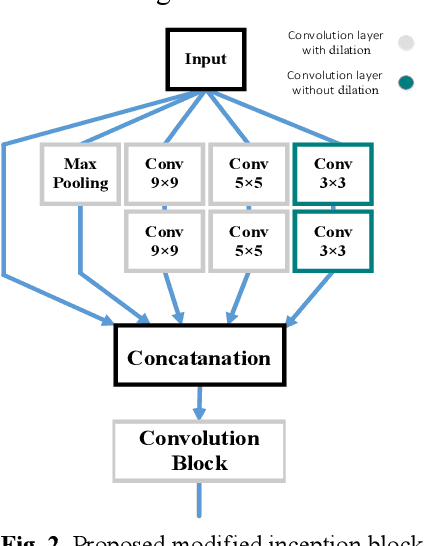
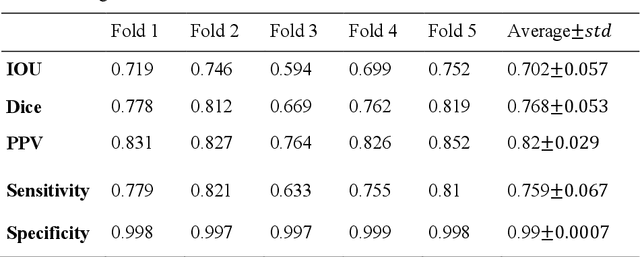
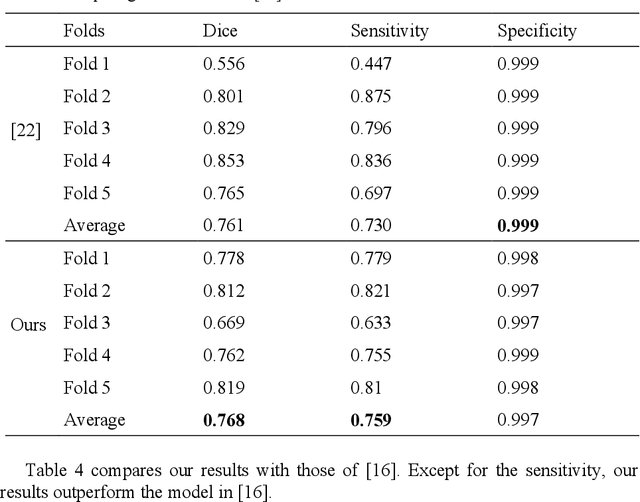
Abstract:The new coronavirus infection has shocked the world since early 2020 with its aggressive outbreak. Rapid detection of the disease saves lives, and relying on medical imaging (Computed Tomography and X-ray) to detect infected lungs has shown to be effective. Deep learning and convolutional neural networks have been used for image analysis in this context. However, accurate identification of infected regions has proven challenging for two main reasons. Firstly, the characteristics of infected areas differ in different images. Secondly, insufficient training data makes it challenging to train various machine learning algorithms, including deep-learning models. This paper proposes an approach to segment lung regions infected by COVID-19 to help cardiologists diagnose the disease more accurately, faster, and more manageable. We propose a bifurcated 2-D model for two types of segmentation. This model uses a shared encoder and a bifurcated connection to two separate decoders. One decoder is for segmentation of the healthy region of the lungs, while the other is for the segmentation of the infected regions. Experiments on publically available images show that the bifurcated structure segments infected regions of the lungs better than state of the art.
Brain Tumor Classification Using Medial Residual Encoder Layers
Nov 01, 2020



Abstract:According to the World Health Organization, cancer is the second leading cause of death worldwide, responsible for over 9.5 million deaths in 2018 alone. Brain tumors count for one out of every four cancer deaths. Accurate and timely diagnosis of brain tumors will lead to more effective treatments. To date, several image classification approaches have been proposed to aid diagnosis and treatment. We propose an encoder layer that uses post-max-pooling features for residual learning. Our approach shows promising results by improving the tumor classification accuracy in MR images using a limited medical image dataset. Experimental evaluations of this model on a dataset consisting of 3064 MR images show 95-98% accuracy, which is better than previous studies on this database.
Classification of Diabetic Retinopathy Using Unlabeled Data and Knowledge Distillation
Sep 01, 2020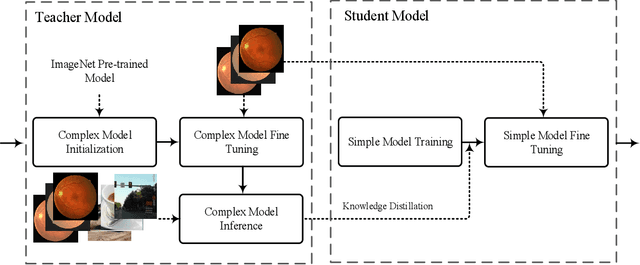
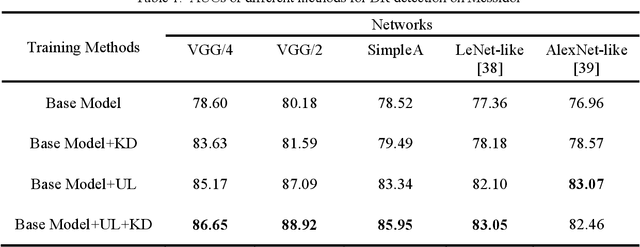
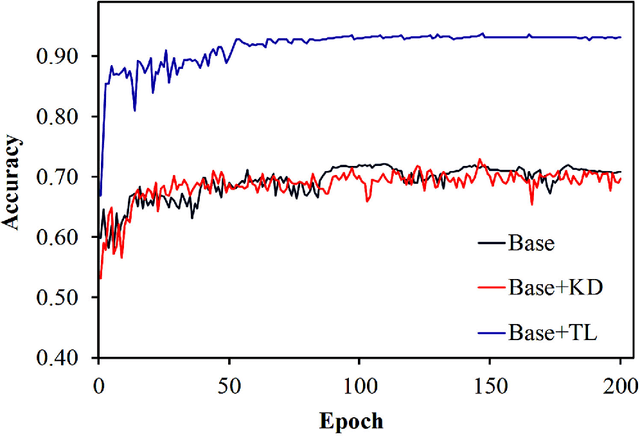
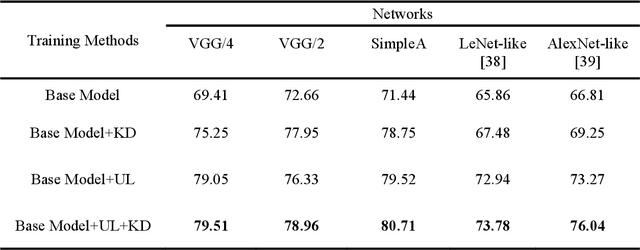
Abstract:Knowledge distillation allows transferring knowledge from a pre-trained model to another. However, it suffers from limitations, and constraints related to the two models need to be architecturally similar. Knowledge distillation addresses some of the shortcomings associated with transfer learning by generalizing a complex model to a lighter model. However, some parts of the knowledge may not be distilled by knowledge distillation sufficiently. In this paper, a novel knowledge distillation approach using transfer learning is proposed. The proposed method transfers the entire knowledge of a model to a new smaller one. To accomplish this, unlabeled data are used in an unsupervised manner to transfer the maximum amount of knowledge to the new slimmer model. The proposed method can be beneficial in medical image analysis, where labeled data are typically scarce. The proposed approach is evaluated in the context of classification of images for diagnosing Diabetic Retinopathy on two publicly available datasets, including Messidor and EyePACS. Simulation results demonstrate that the approach is effective in transferring knowledge from a complex model to a lighter one. Furthermore, experimental results illustrate that the performance of different small models is improved significantly using unlabeled data and knowledge distillation.
Selection of Proper EEG Channels for Subject Intention Classification Using Deep Learning
Jul 24, 2020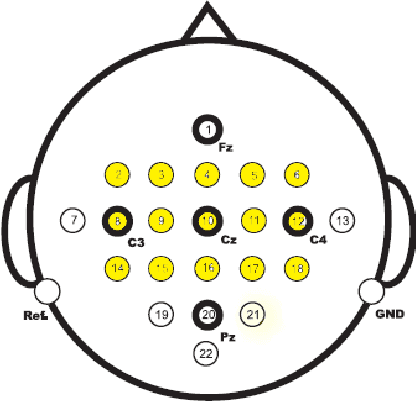
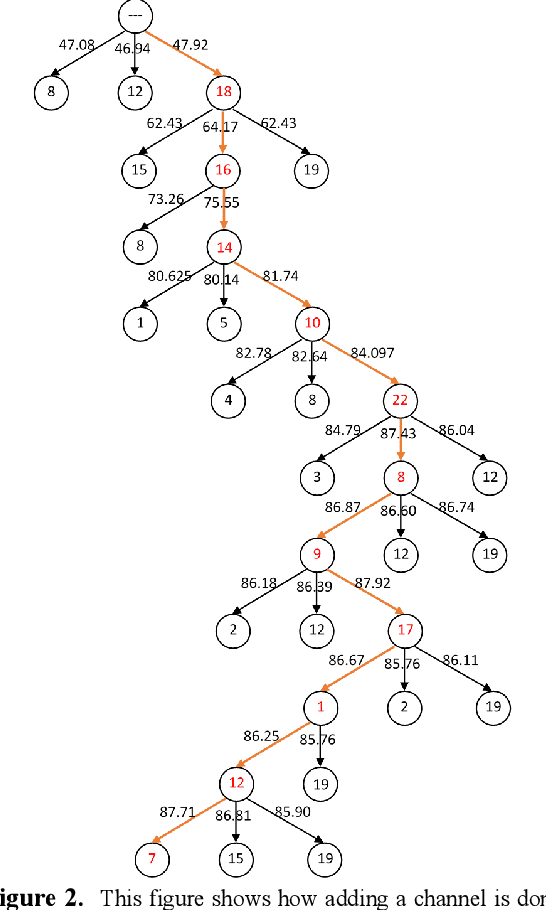
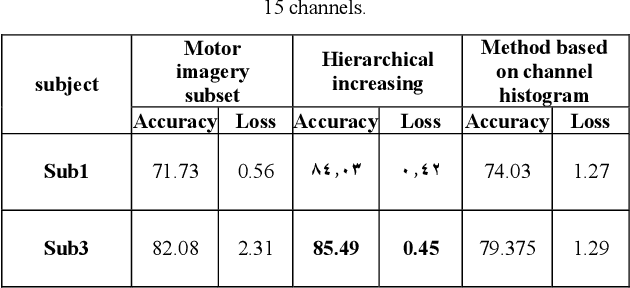
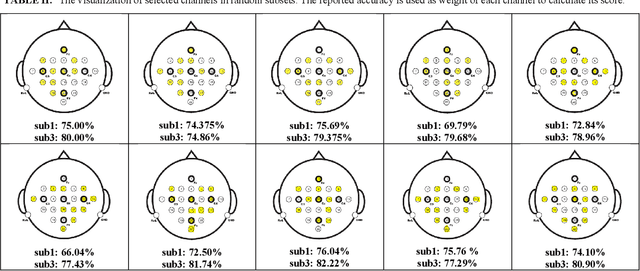
Abstract:Brain signals could be used to control devices to assist individuals with disabilities. Signals such as electroencephalograms are complicated and hard to interpret. A set of signals are collected and should be classified to identify the intention of the subject. Different approaches have tried to reduce the number of channels before sending them to a classifier. We are proposing a deep learning-based method for selecting an informative subset of channels that produce high classification accuracy. The proposed network could be trained for an individual subject for the selection of an appropriate set of channels. Reduction of the number of channels could reduce the complexity of brain-computer-interface devices. Our method could find a subset of channels. The accuracy of our approach is comparable with a model trained on all channels. Hence, our model's temporal and power costs are low, while its accuracy is kept high.
Fault-Tolerant Routing in Hypercube Networks by Avoiding Faulty Nodes
May 01, 2019

Abstract:Next to the high performance, the essential feature of the multiprocessor systems is their fault-tolerant capability. In this regard, fault-tolerant interconnection networks and especially fault-tolerant routing methods are crucial parts of these systems. Hypercube is a popular interconnection network that is used in many multiprocessors. There are several suggested practices for fault tolerant routing in these systems. In this paper, a neural routing method is introduced which is named as Fault Avoidance Routing (FAR). This method keeps the message as far from the faulty nodes as possible. The proposed method employs the Hopfield neural network. In comparison with other neural routing methods, FAR requires a small number of neurons. The simulation results show that FAR has excellent performance in larger interconnection networks and networks with a high density of faulty nodes.
 Add to Chrome
Add to Chrome Add to Firefox
Add to Firefox Add to Edge
Add to Edge